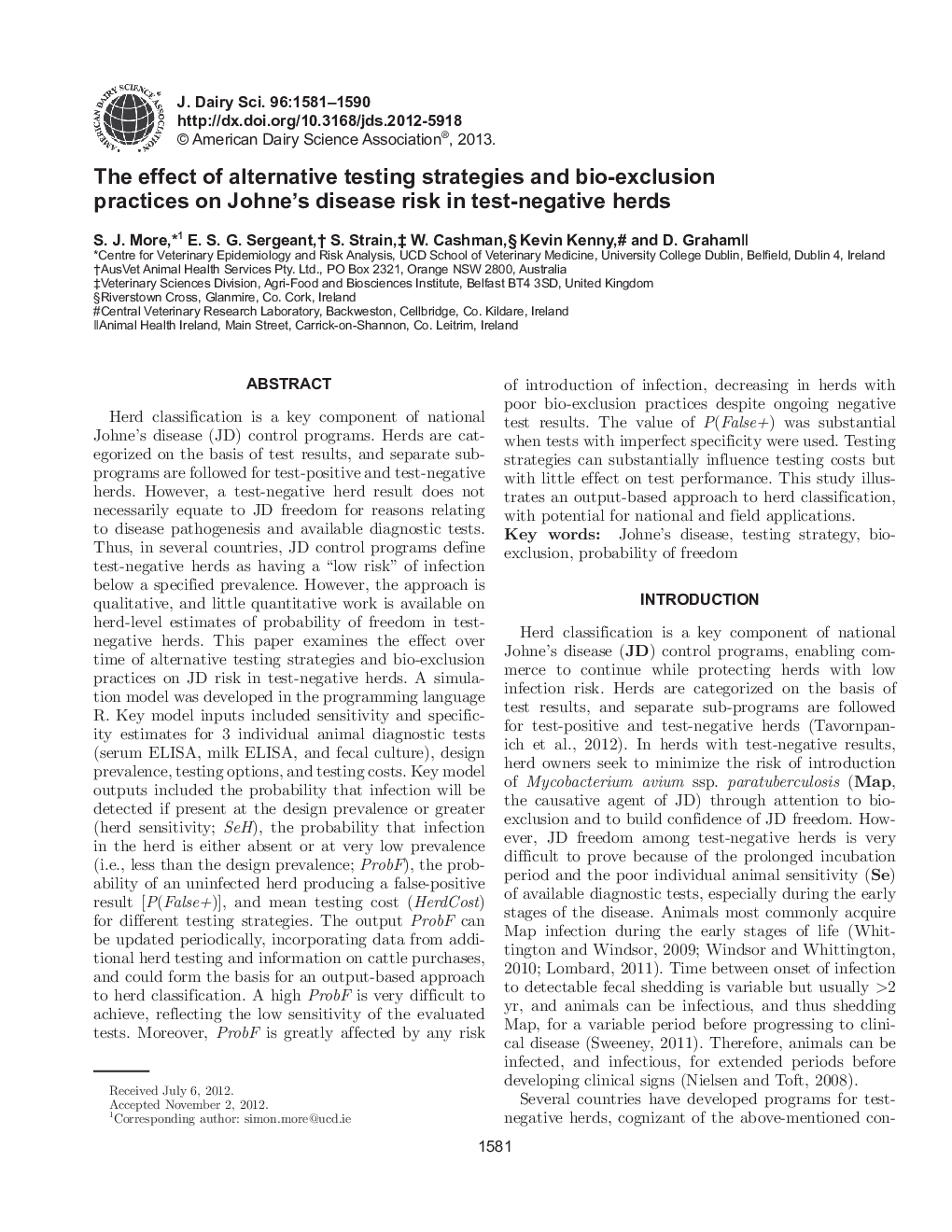| کد مقاله | کد نشریه | سال انتشار | مقاله انگلیسی | نسخه تمام متن |
|---|---|---|---|---|
| 10976164 | 1108039 | 2013 | 10 صفحه PDF | دانلود رایگان |
عنوان انگلیسی مقاله ISI
The effect of alternative testing strategies and bio-exclusion practices on Johne's disease risk in test-negative herds
ترجمه فارسی عنوان
تاثیر استراتژی های آزمایش جایگزین و شیوه های بیولوژیک در ریسک بیماری یونگ در گاوهای آزمایش منفی
دانلود مقاله + سفارش ترجمه
دانلود مقاله ISI انگلیسی
رایگان برای ایرانیان
کلمات کلیدی
بیماری جونیا، استراتژی تست، بیولوژیک، احتمال آزادی،
موضوعات مرتبط
علوم زیستی و بیوفناوری
علوم کشاورزی و بیولوژیک
علوم دامی و جانورشناسی
چکیده انگلیسی
Herd classification is a key component of national Johne's disease (JD) control programs. Herds are categorized on the basis of test results, and separate sub-programs are followed for test-positive and test-negative herds. However, a test-negative herd result does not necessarily equate to JD freedom for reasons relating to disease pathogenesis and available diagnostic tests. Thus, in several countries, JD control programs define test-negative herds as having a “low risk” of infection below a specified prevalence. However, the approach is qualitative, and little quantitative work is available on herd-level estimates of probability of freedom in test-negative herds. This paper examines the effect over time of alternative testing strategies and bio-exclusion practices on JD risk in test-negative herds. A simulation model was developed in the programming language R. Key model inputs included sensitivity and specificity estimates for 3 individual animal diagnostic tests (serum ELISA, milk ELISA, and fecal culture), design prevalence, testing options, and testing costs. Key model outputs included the probability that infection will be detected if present at the design prevalence or greater (herd sensitivity; SeH), the probability that infection in the herd is either absent or at very low prevalence (i.e., less than the design prevalence; ProbF), the probability of an uninfected herd producing a false-positive result [P(False+)], and mean testing cost (HerdCost) for different testing strategies. The output ProbF can be updated periodically, incorporating data from additional herd testing and information on cattle purchases, and could form the basis for an output-based approach to herd classification. A high ProbF is very difficult to achieve, reflecting the low sensitivity of the evaluated tests. Moreover, ProbF is greatly affected by any risk of introduction of infection, decreasing in herds with poor bio-exclusion practices despite ongoing negative test results. The value of P(False+) was substantial when tests with imperfect specificity were used. Testing strategies can substantially influence testing costs but with little effect on test performance. This study illustrates an output-based approach to herd classification, with potential for national and field applications.
ناشر
Database: Elsevier - ScienceDirect (ساینس دایرکت)
Journal: Journal of Dairy Science - Volume 96, Issue 3, March 2013, Pages 1581-1590
Journal: Journal of Dairy Science - Volume 96, Issue 3, March 2013, Pages 1581-1590
نویسندگان
S.J. More, E.S.G. Sergeant, S. Strain, W. Cashman, Kevin Kenny, D. Graham,
